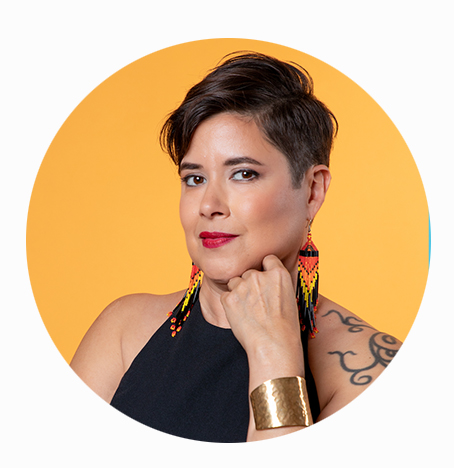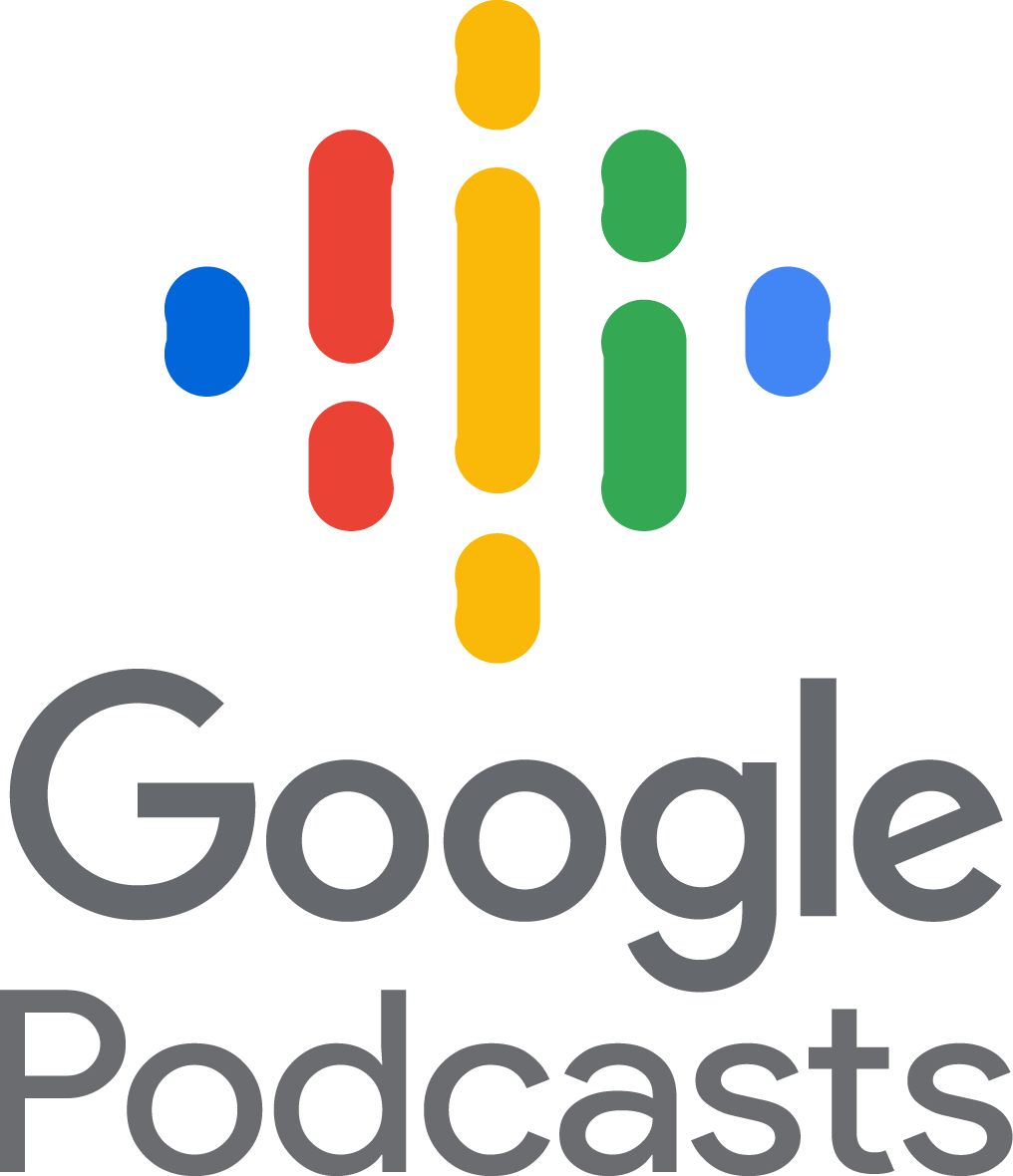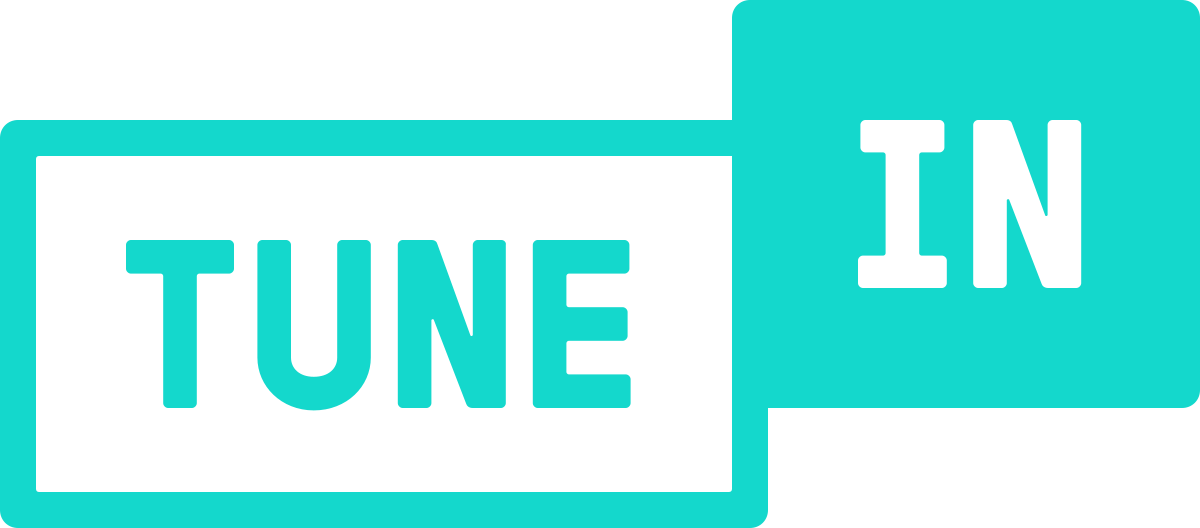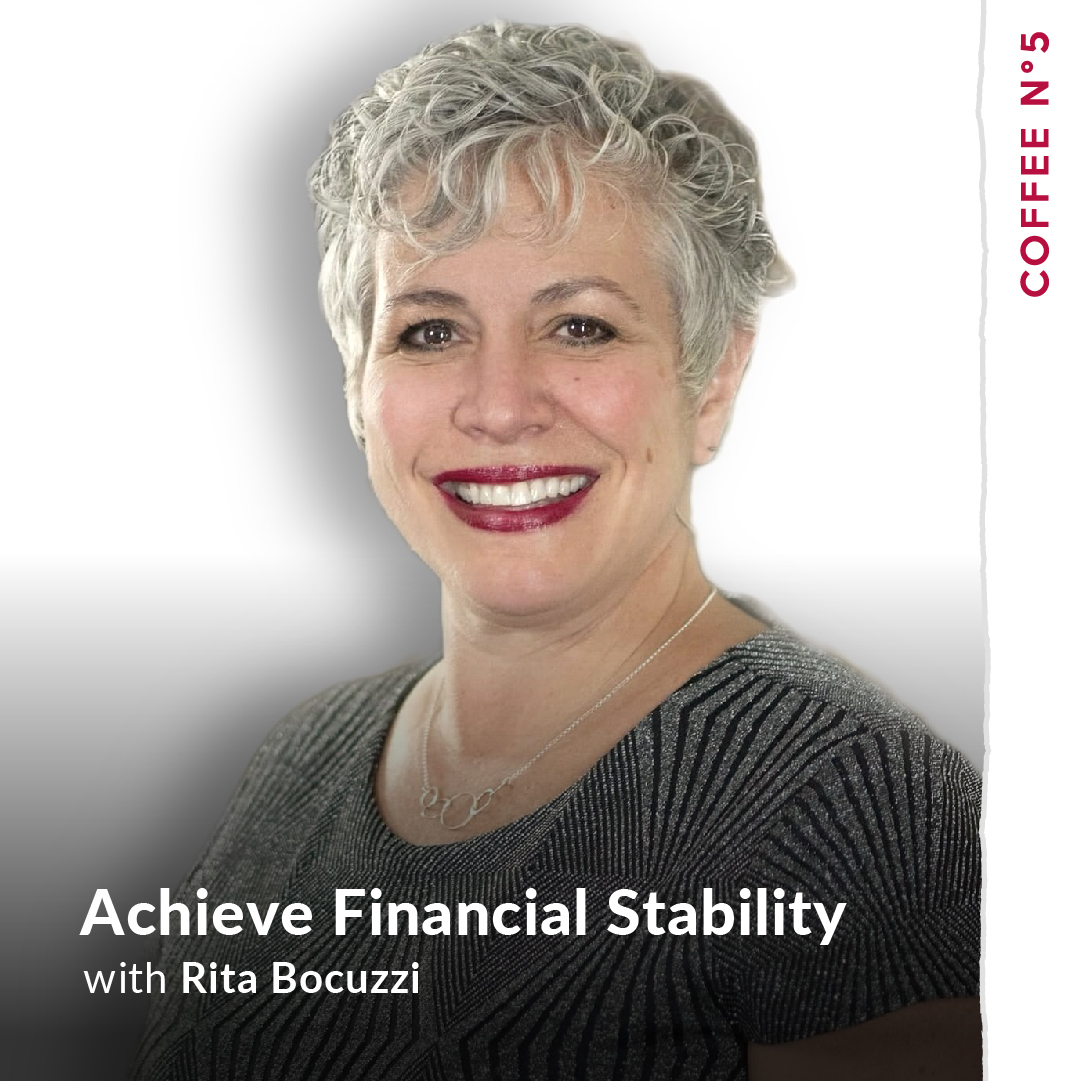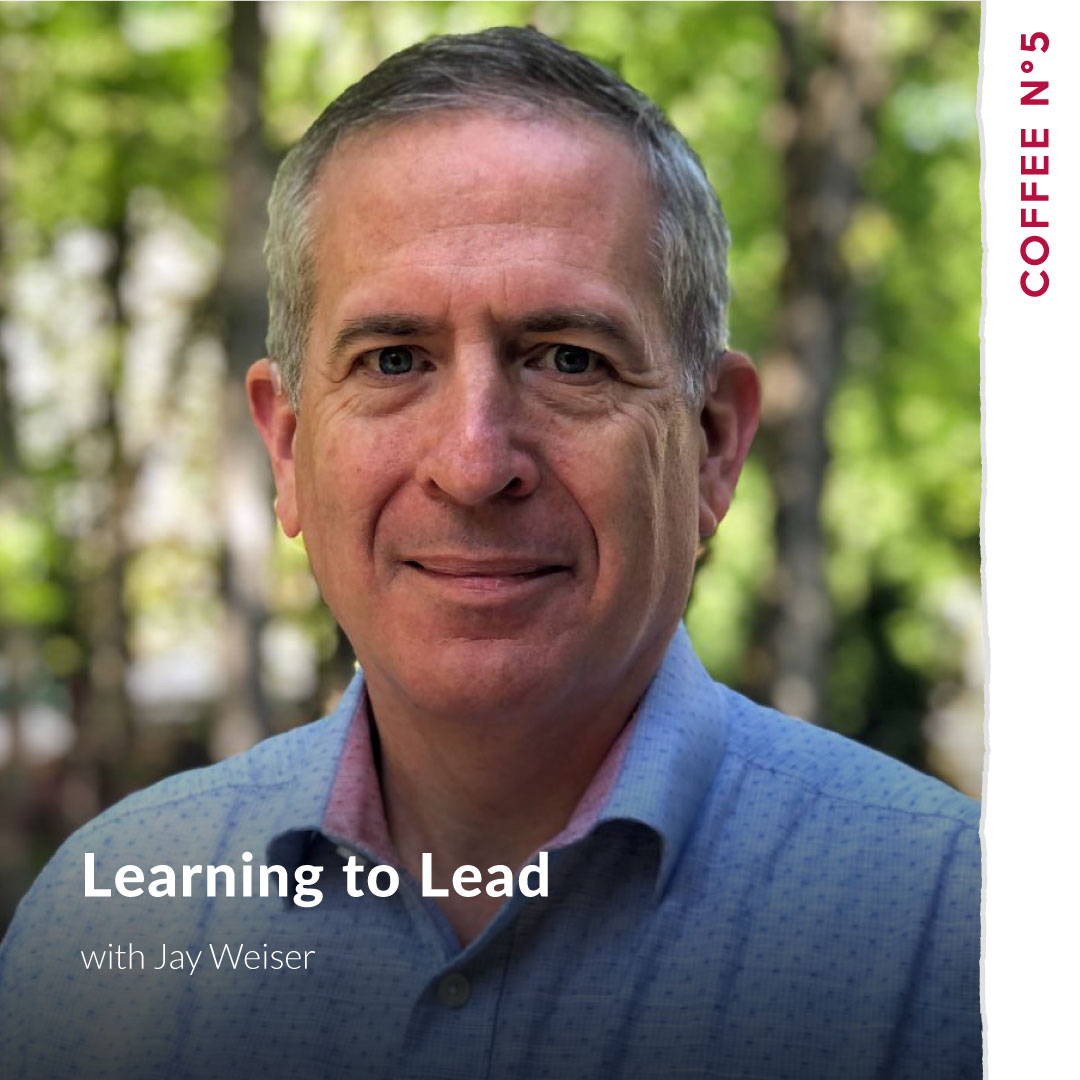Lara Schmoisman 0:05
This is Coffee Number Five. I’m your host Lara Schmoisman. Hi, everyone. Welcome back to Coffee Number Five. Today I’m super excited. I mean, you know that person that keeps coming back to you in every talk, like you talk to people is talk about her. Her name comes up, then I go to a conference. I keep running to her! So I say well, I need to have her in this podcast. It’s meant to be so welcome Sandra Velasquez. It’s such a pleasure to have you here.
Sandra Velasquez 0:39
Thank you so much. Good to see you again.
Lara Schmoisman 0:41
Yes! So tell me everything I want to I have so many questions because your journeys been crazy. You started during COVID with nothing. You just took a class for what I understood, and you want to create your own product. So how did you come up with the idea? How do you say, did you follow the place? And if I’m not wrong, it was someone who’s given you a class in the UK they’re raised in the UK. And but you created a brand really made for the US market? Yes. With a flair of Latina.
Sandra Velasquez 1:16
Yes. Yes. So the story is that I actually was a professional musician for 15 years. So that’s what I thought I was going to be doing for my whole life. I was a songwriter. I led a band called Pistolera. So singing in Spanish, again, celebrating culture, but through music. And because I live in New York, which is very expensive. I’ve always had a day job, you know, for health insurance. And because I have a child, and so I found myself unemployed for the first time at the age of 43, which was very scary because here I am, I’m in my 40s I have a child I’m a single mom, I have student loan debt, I have personal credit card debt, and I have like nothing to show for it. I have no savings I have you know, so I’m like how did I get here? How was this my life and it was in that moment where I just decided that if I wanted to change my life if I wanted something different I’m gonna I was going to have to take different actions. And so I decided to build a brand and you know most people that build brands ideally you want to have some money before you build it. But I had no money so for me I was like I’m this is my chance to actually make money to build something bigger that can prove change my future and my child’s future. And so I was served an ad through Facebook, from Formula Botanica, which is a online skincare formulation school based in the UK. And I enrolled I opted for the payment plan option so I enrolled in the payment plan option. And I studied formulation for a year they give you about a year access or more maybe to the platform to go through all of the modules you have to take tests so you have a final project it’s a you know it’s online school
Lara Schmoisman 2:58
You did the real thing, you didn’t go to an r&d and create a formula you did by hand, you actually bought ingredients
Sandra Velasquez 3:06
Yes. And that’s really because I was a beauty industry outsider I didn’t know how to go get products made, I didn’t know how to find a chemist or find an r&d. Also, I didn’t have any money to do that. So I that’s when I you know, that’s why I said you know what, I’m going to have to make these products myself and, and that’s why I chose Bath and Body. And that’s why I chose soap because it was something that you can make in your house. And so that’s what I did. I studied formulation for a year. At the same time, I was also working on the brand for a year. Again, I had no money to pay for branding. So I asked my designer for a payment plan. Fortunately she said yes. And that’s really how I launched my brand was on my American Express credit card by payment plan because I had no money to upfront to pay for anything. So I worked on the brand and the formulation for a year obviously I had to go get other jobs you know to pay the rent. So I went and I just got three jobs I had one job that was to pay the rent and bills one job that was to pay off my debt, and another job to fund my brand and pay off my credit card, so that I could build this brand. And so that’s that’s what I did and then COVID happened but I was I was already in the process of building this brand so it didn’t occur to me not to launch the brand. I just went forward anyway and luckily COVID actually turned out to be really great for a lot of you know e-commerce brands because we’re all stuck at home and everyone was doing self-care at home that so you know I, the brand still took off right away, we had sales from day one.
Lara Schmoisman 4:33
That’s incredible. So you created this brand, how many skus did you launch how many products
Sandra Velasquez 4:41
I launched with what I wanted to be like a collection things that went together. So I launched with three cactus soaps, and one body scrub and one lotion bar. And so it was technically five skus, but really just three products right a soap, a scrub and a lotion bar.
Lara Schmoisman 4:57
If you will have to do it again. And what do you start? With the same line? Or what do you recommend to do something else, you will say I will just start big with one or one in two variations,
Sandra Velasquez 5:09
it was good that I launched with a set, because then I was able to sell a bath set. And that was a higher order value. So I don’t think I would change that. But what I might have done differently is I might have launched with just one soap instead of three, like a body soap, and then leave the opportunity to have like a facial soap, right? Because if it’s marketed for the face, it can be a higher price point. But with body care, it’s not.
Lara Schmoisman 5:34
Okay, so you created the website and have five products, which is a great number in marketing to have three to five to lunch with that, because it’s it’s hard when you launch with one and you only have one product to show showcasing the website, how did you do the advertising? How did you go out there and find your people? How did you do the research of finding who will be the people interested in your product?
Sandra Velasquez 6:02
Well, because I built the whole brand around the customer from the beginning. So I think that that’s an important distinction is some people build, they launch, they create a product and they launch it and then they try to go find out who is this for? How do I sell it? How do I find those people? But I did it the other way around, I created the product specifically for the customer, which was the Latina, clean beauty customer. And I knew that if I created the brand and the branding spoke to them immediately, it would attract them immediately which it did. So I think that that’s also the importance of branding because that’s your first touch point of marketing. You know a lot of people in beauty, especially because I went to formulation school, I was around, you know, I was in a student group with 1000s of formulators, and people formulators and people that make products get really excited about ingredients. And they think that that’s what they’re they’re building an ingredient brand, but that’s not ultimately what you’re building, you’re building a marketing company,
Lara Schmoisman 6:53
Yeah, you’re doing a brand. And what I recommend always to my clients is the first thing you have, you might have an idea of the ingredients that you wants to use. But you need to know what’s your branding, who’s your target audience who’s your archetype? Who are your phones, that they’re gonna use because everything tells a story.
Sandra Velasquez 7:13
Yeah, exactly. And so I, that’s why I focused on the branding from the very beginning. Because the branding, I knew would speak to, to my customer, I knew that by centering it around the nopal, which is a you know, an ancient Mexican symbol that that it would attract my base consumer, because every single Mexican person grew up with nopales. It’s the most Mexican plan ever it’s on the Mexican flag. And so I knew that they would get it even though other people wouldn’t get it. My idea was if I can get my base consumer to get it right away, that’s going to help me and then I’m going to make it so beautiful that other people are going to want to buy it just because it’s beautiful, even if they don’t know what a nopal is. And so that was really the strategy. And I started running ads on Facebook before I launched. And so I was running just the logo, I had just what we call the cactus goddess logo, I was running that on Facebook, really for like $20 a day or something. And I was doing a very targeted because this was back in the day when you could ran targeted ads, those days are now over. So no one should try to copy that because those days are over. And so I was able to send this ad specifically to Latinas in Houston, Texas, between the ages of 27 and 40. Who liked Sephora, salsa, human rights, you know, beauty, etc. And that’s how I got people to sign up on my email list in advance of launch so that when I launched I have someone to launch to.
Lara Schmoisman 8:34
So you put an ad that just said join my email list when it’s coming – to know when it’s coming up?
Sandra Velasquez 8:39
Yes, exactly.
Lara Schmoisman 8:41
And how many emails you got?
Sandra Velasquez 8:43
800
Lara Schmoisman 8:45
That’s fantastic. I because I always say that I’ve believe in ads, I believe in funnels, I believe in everything that everyone knows that it works in marketing, but I really believe that the bottom of the funnel is connected with your audience by email marketing SMS, you don’t need to run so much ads, because they know you already. So you just need to connect with them and remind them you are here. Yes. So right now how many skus you have.
Sandra Velasquez 9:18
So we we’ve only grown a little bit, you know, we added another exfoliant. So now we have two exfoliants and we added another lotion bar. So it’s just it’s like, seven instead of five. So you know, obviously we have some merch items. But that’s I don’t really count that because those are just kind of like for the website. But in terms of skus, I was limited to what I could make because again, I still didn’t have money for the first two years. I was bootstrapping and it wasn’t until just you know at the end of last year that I finally raised outside capital.
Lara Schmoisman 9:46
Yeah, well we’re gonna talk about that in a minute of course we need to talk about that. But um, this is my next question. Are you in retail?
Sandra Velasquez 9:55
Yeah, so we are in Nordstrom, we’re in Credo beauty. We are at Free People movement. We’re at 13 Lun, we’re at Whole Foods in New York City and about 400 boutiques across the country. So there’s a lot of boutiques we have a really strong boutique business.
Lara Schmoisman 10:08
So how did you get into that business? And that’s what I want to get. Because not only are in the big retail, you’re in a small niche, of boutiques. So how you approach each one by their own and say, Hey, how does it work?
Sandra Velasquez 10:22
Yeah, I get asked this question a lot. And and the reality is that they all came to us. So we actually are still sorting through they have a plot, we have a link on the in the footer of our website that says, you know, Apply to be our stockist, and we’ve had over 800, 800 boutiques apply to be our stockist. And we’ve had to say no to about half of them. Because there’s conflict of distribution, like some of them are very close to each other. And they don’t like it. So Priscilla, our VP of sales, who started with me at the beginning as like a contractor, she, it was her job to really sort through and like vet them to make sure that it was the right partner that it was not in conflict with another partner that we had. But all of these boutiques found us, again, through the same ads that I was serving to our DTC customers. And because the branding is so strong, because as a boutique owner, you want something on your shelf that stems out, you want something that you don’t have. And so again, that just going back to the importance of the brand new. That is they that’s what attracted them to us.
Lara Schmoisman 11:18
That’s incredible. And today how did your theme change from the beginning? Until today? How do you structure your company? You mentioned that it had a VP of sales. When was the right time to bring a VP of sales?
Sandra Velasquez 11:34
Yes. So I in the beginning, it was just me. So I was doing everything, including making the product. Yes. The first person that I’ve hired was a freelance social media manager. So Sam Gomez is now our marketing manager. She’s a full time employee, but she started as like a freelancer, like five hours a week, and then it was 10 hours a week. And then it was, you know, you know, 20 hours a week and so she was just a freelancer because the the social media was taking up a lot of my time. And I was still making the product for the first year. So I was literally in the in the, you know, the kitchen making the soap. So I didn’t have time to do all of the social media. So that was the first person I hired as a freelancer. And then Priscilla, our VP are now VP of sales. She started as a contractor, really just like the commission based and, and she came to me, she found me through a magazine article. And she’s Latina. So she was interested in you know, working with a Latina brand. And so I’ve actually been with they’ve been with me since the beginning, but just in a in like a part time capacity. So when I raised money, I brought them on full time.
Lara Schmoisman 12:38
That’s amazing. Okay, so let’s get to that part. That you raised money. Yeah. When was that moment that you decide? Okay, I cannot be self ponder anymore. I needed to get money outside because getting money is also give away part of your company.
Sandra Velasquez 12:56
Yes, exactly. Exactly. Yeah, you’re selling, you’re selling equity in your company. And so for me, I couldn’t keep up with the demand anymore. And it was really just stunting our growth because I couldn’t make new products, I couldn’t market more, I couldn’t hire people to help me. And so that’s when I realized, like, I can’t keep taking just like $30,000 loans or even a $50,000 loan I need like real money. And so that is when I decided, Okay, I’m gonna have to go and raise like real capital. And I initially set out to only raise like, half a million and then I changed my mind. Like, you know what, I should raise a million and then one of my mentors was like, you really should just raise two because it’s the same amount of work. So then I ended up I was set up to raise two and then I ended up raising 2.7.
Lara Schmoisman 13:43
Okay, and okay, now, tell us a story. How they do raise that money?
Sandra Velasquez 13:48
Yes, it is. I had never raised money before. So it’s, I had to learn as I went. And that was really challenging. Because you’re also stressed because you need money. But you have to show up in full confidence. You can’t show up stressed or desperate, you can’t just take anyone’s money. And it was just a lot of cold outreach, like emailing people asking for introductions. You know, I joined a lot of I applied and got into a lot of accelerators. That gave me the opportunity to connect to connect with investors because I didn’t even know how to find investors.
Lara Schmoisman 14:20
Yeah, but there is like we talked about the marketing deck. Also you need to make an investor deck. You can’t go up without information. Right? Hey, give me some money.
Sandra Velasquez 14:31
Yes, exactly. So yeah, so I had to make an investor deck I had been comfortable making pitch decks but you know, the investor deck was something that was that I think and I went through like seven iterations. I think like I finally you know, was that like version seven by the end of and really just tweaking it as you go because as you meet with investors, you get asked questions and then you realize like, okay, clearly they have this question because it’s not clear in the deck. So let me update the deck and Yeah, just got feedback from other friends who had raised before. And, and and just, you know, learned as I went, like, I was not a pro at all, like, I’m still learning. But definitely now if I want to go to raise again, for a Series A, it will be easier because I’ve done it before. And now I have a waiting list of investors who are interested in investing in Nopalera, who didn’t get a chance to the first time.
Lara Schmoisman 15:24
That’s incredible. And then you went to Shark Tank. But yes, but let’s talk about that. How was that experience?
Sandra Velasquez 15:33
Yeah, Shark Tank is really, really nerve wracking. It’s, it’s also a part time job like to prepare, like, I don’t think people know how much is involved that goes on behind the scenes before you actually walk into the tank. So, you know, I think I applied at the beginning of last year, like maybe February and then. And then once I was got the callback, it was just preparation, like zoom meetings every week, every two weeks, up until I filmed in July. So that’s it was like half a year, you know, of preparation. And then when you do film, you’re not guarantee that your episode will air. And they tell they’re very clear about that. So you know, to me, that’s heartbreaking that people go through all of that work. And then their episode never sees the light of day. And then they don’t tell you when your episode will air. So you’re just kind of waiting and waiting and waiting. And I was hoping that it would have aired at the end of last year for q4. But it didn’t. So it’s you know, I’m glad that it ended up airing in January.
Lara Schmoisman 16:28
You can not say anything until it airs either.
Sandra Velasquez 16:32
Right. You cannot.
Lara Schmoisman 16:33
You cannot share anything, even if you get the money.
Sandra Velasquez 16:37
Yes, correct. You cannot you have to wait until it airs.
Lara Schmoisman 16:40
And what happened if it doesn’t air?
Sandra Velasquez 16:43
That’s it, then you just don’t air. No one knows.
Lara Schmoisman 16:46
No one knows. That’s incredible. And it never wreaking. But you got the money and why you decided to go with?
Sandra Velasquez 16:53
I didn’t get the money. No, I did not get the money. I was I was given two offers. And I turned them down.
Lara Schmoisman 17:00
Well, you were offered. That’s what I meant. You didn’t get the offers from there. And I need turn them down. Why?
Sandra Velasquez 17:06
Yes, because at that point, by the time I was actually filming Shark Tank, it was now July last July, I was in a different I had started to actually fundraise. So I was going out to raise like a million $2 million. And I had a lot of interest. And so there was no way that I could undercut the valuation and give away so much of my company for so little money. You know, and so I was open to them, you know, giving me what I asked for, but they they were at such a different end of the spectrum, you know, they wanted like 30% of the company for $300,000. And there’s just no way.
Lara Schmoisman 17:38
No, absolutely, that didn’t make sense for you. And how do you feel about having to give away your company in order to get money?
Sandra Velasquez 17:49
I mean, I don’t really have a choice. So I really my feeling is that like I’m grateful for the opportunity. I’m grateful that that people wanted to give me you know, money, and that we are able to stay in business and have a team and continue to build because there was really just no other way. I had no, no money myself. No, I don’t come from money. No friends and family have money. So for me, it was the only way.
Lara Schmoisman 18:12
Yeah, that’s clear. So what’s next for you? And Nopalera?
Sandra Velasquez 18:17
Yeah, so next is we are working on the innovation pipeline for 2024. So that’s now that we have money, we can afford to make new products, you know, and it’s expensive to do all the testing, you know, so now we can do that those kinds of things and work with a chemist to help accelerate the innovation pipeline because our customers are there they’re in front of us and they’re ready to buy anything that we make we just have to make the stuff you know and
Lara Schmoisman 18:44
But you need to make it right also you cannot rush production like it, all this testing. So you need to-
Sandra Velasquez 18:50
Yeah, yeah, it takes a year. And so that’s why you know, we need to start working on 2024 like yesterday and and then really what’s next is partnering with a large retailer like at Ulta or Sephora to really expand our business you know, nationwide.
Lara Schmoisman 19:06
I want you to touch points here because first of all, let’s talk about one hand is product that it takes a long time to develop but the other side is creating the right packaging for that products too. They’re two completely separate problems to have. And that what comes first and how you work the two logistics because it is completely, and for you that you were doing it at home, I think it was even tougher to work with packaging.
Sandra Velasquez 19:35
Yes. Now we have partners that help us source packaging because in the beginning it was me just searching the internet looking for the right thing that I wanted. But now we have packaging partners that can help us again, accelerate that so it’s not just us looking for packaging. And now you know our director of ups you know that I hired. She also has experience sourcing packaging so she already has relationships. So the whole thing just goes faster and is a little easier. And in terms of branding, we have you know, our designers the best. So anytime we need to brand something the design of the packaging, that’s not a problem. It’s you know, but sourcing packaging. Now it’s a little easier that we have a team. Yeah.
Lara Schmoisman 20:14
And second, when you work with retail, because working with retail is a completely different experience than you selling DTC. What are those things that it came to you when you started having dealings deals with retail that said, Oh, I didn’t know about it, like, for example, going to have to visit different stores or have to pay for marketing in those even in those retails?
Sandra Velasquez 20:40
Yes, I mean, I came from one of my previous you know, as I mentioned, I always had day jobs aside from being a musician. So I worked in CPG. So I already had experience, I actually worked as a CPG consultant. So I had been teaching classes to brands that were selling to grocery stores, which is a different model, but the concept of margins is the same. And so making sure that you price your products accordingly, so I was already aware of how wholesaling worked, fortunately, but what was new for me is that in beauty, the retailers take a much larger margin than then grocery retailers. So for example, if you’re a grocery, let’s say you make a drink or let’s say make a protein bar, and you’re selling your product to Whole Foods, you know, your, the retailer is going to take like a 40 margin, maybe a 44. And in beauty, the retailer’s take a 60
Lara Schmoisman 21:27
That’s huge. So it is so very important that it because on top of that you have to have other commitments. Marketing commitments, right with the, with the retailers
Sandra Velasquez 21:40
Yeah, not so much as we I mean, if you’re paying for end caps, like that’s one thing, but really, they just need to be like for beauty you need to have minis available for sampling. You know so that’s an that’s another cost right now you’re making the same product twice. So a full size version and a mini version and and one of them might be like a free gift with purchase what they call GWP.
Lara Schmoisman 21:59
Yeah. Yeah. Well, Sandra, I’m so impressed with their journey and so grateful that you were here today with us and telling our audience at Coffee Number Five your experience and you were so generous with the tips and so open about it. So thank you. Thank you. Thank you for being here.
Sandra Velasquez 22:18
Thank you.
Lara Schmoisman 22:20
And yo you guys, I will see you again next week with more Coffee Number Five. Find everything you need at Laraschmoisman.com Or in the Episode Notes right below. Don’t forget to subscribe. It was so good to have you here today. See you next time. Catch you on the flip side. Ciao ciao.

